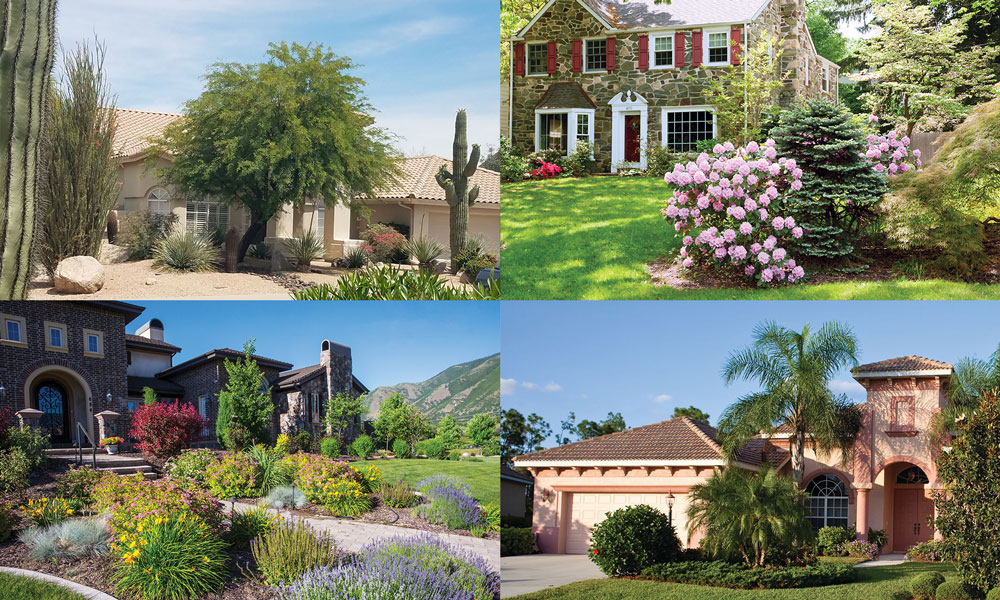
We Move Trees in Colorado and Wyoming
Based in Fort Collins, Colorado, we regularly work in northern Colorado and southern Wyoming.
- Fort Collins, Loveland, Greeley, Windsor
- Longmont, Boulder
- Cheyenne, Laramie
We take larger projects in Nebraska, Kansas, Oklahoma, New Mexico, Arizona, Utah, and beyond.
Our Tree Spades can Transplant Large and Small Trees
Successful tree relocation requires very specialized skill and equipment. We have been transplanting trees since 1984 and have the expertise for your project. We have developed a unique tree wrapping system to minimize branch breakage or damage during the relocation process.
We have tree spades that dig a 65″, 90″, and 100″ root ball width to accommodate different tree sizes. Tree size determines the required spade size. Tree size is measured as caliper, which is the trunk diameter 18″ above ground level.
Tree Staking
Large Trees Require T-Posts as Stakes
International Society of Arboriculture, Bugwood.org
SavATree can stake transplanted trees for customers. Customers wishing to do their own staking will need to ensure the strength of the system is sufficient to support the canopy of the transplanted tree. T-posts should be used rather than small stakes. Guy cables should be attached to t-posts close to grade.
Materials needed:
- T-posts
- 3/16″ (or larger as required) aircraft cable running through a piece of garden hose
- 2 u-bolts at each end of the cable
Tree Relocation Aftercare
Recommended Tree Care after Planting
Transplanting is a major operation from which most trees recover slowly. A major portion of the root system is lost in digging, and the tree must reestablish sufficient roots to sustain itself. The tree’s ability to obtain and transport water and minerals is greatly reduced. Varying degrees of water stress is the result, and the tree experiences transplant shock.
Proper watering can be the key to the survival of newly planted trees
Site soil conditions will dictate the amount and frequency of watering. The goal is to keep the roots in the soil moist but not too wet to let the roots absorb oxygen. A slow gentle soaking is preferable. A good rule of thumb is to water the top of the root ball with a garden hose set at about half volume for approximately 60 minutes (or until runoff begins) after the initial installation. The water retention capacity of the soil should dictate future watering frequency. An indicator that the tree needs to be watered again is when the soil approximately 2 inches below grade is too dry to clump together in your hand. It is important to note that excess water accumulation in the planting hole is a leading cause of transplant death. Watering must be appropriate for soil type and drainage.
Generally, during spring, summer, and fall: If rainfall is not sufficient (1 inch/week), the tree should be watered every 10 days. In winter: If we experience a dry month, trees should be watered on a mild day. Evergreens require more water than deciduous trees.
Stakes should be used
Guy wires should be slack to force the tree’s roots to grow and eventually support it, but not slack enough to allow it to fall or lean. The staking system should be checked periodically to ensure it is not injuring the tree. Stakes should be removed after one or more growing seasons, depending on the size of the tree and the soil conditions. If support systems are left in place too long, the tree’s ability to stand alone may be reduced, and the chances of girdling injury are increased.
Wait to fertilize
Since the root system of a newly planted tree is limited, fertilization is often not recommended at the time of planting. Excessive fertilizer salts in the root zone can be damaging. If fertilizer is used at planting or in the first growing season, the application of a controlled-release fertilizer is suggested. Fertilization in the fall when the roots are active can be beneficial.
Mulching
The area around the tree should be mulched with three to four inches of organic mulch. The mulch will help reduce competition from weeds and grasses, conserve soil moisture and moderate soil temperature extremes. The mulch should not be placed against the trunk of the tree as that can cause bark suffocation or crown rot. Black plastic should not be placed under the mulch since it restricts water movement and oxygen availability to the roots.
Pruning following planting should be limited
The tree will grow and establish most rapidly if pruning is minimized at planting. Broken or damaged limbs should be removed.
Do not use tree wrap
Many early references recommend wrapping the trunks of newly planted trees to protect against temperature extremes, sun-scald, boring insects, and drying. More recent research indicates that temperature differentials at the bark are more significant with tree wrap than without it. Further, tree wrap tends to hold moisture on the bark and can lead to fungal problems. Also, insects tend to burrow between the bark and the wrap and can be worse with wrap than without it.
Tree Transplanting Frequently Asked Questions
HOW MUCH DOES TREE RELOCATION COST?
Many factors go into determining the cost associated with tree transplanting. Factors include the size of the tree to transplant, the distance to move the tree, site access, digging conditions, pre-dig site work necessary, post-dig site work required, the total number of trees to move, travel time to and from the job site, to name a few. We are happy to provide a quote based on your project details. Providing pictures of your tree is helpful.
WHAT TIME OF YEAR CAN A TREE BE TRANSPLANTED?
The optimal time of year to transplant trees and shrubs is either in the spring or fall seasons, due to lower stress on plants during those times of the year. However, trees can successfully be transplanted throughout the year, as long as stress factors are properly mitigated, e.g., upsizing the root ball, pre-watering, applying anti-desiccant.
HOW MUCH NOTICE IS NEEDED TO TRANSPLANT A TREE?
We can advise and make recommendations based on your project plans. Early involvement in the plan/design stage may also avoid scheduling delays during busy times of the year. The absolute minimum notice, however, is 3 business days to ensure pre-dig utility notifications have been made, and all underground utility locations have been marked on the site(s).
WHAT ARE THE FACTORS THAT DETERMINE WHETHER A TREE CAN BE TRANSPLANTED?
We use trunk diameter to help establish the corresponding tree spade size that is most appropriate for the tree. The canopy spread will also be a determining factor in assessing the transplantability of a tree. An evergreen tree whose canopy is very flexible works well; tree limbs will envelop the tree within the spade implement. On the other hand, a low branching species, like an Apple tree, whose limbs are fairly rigid, may prevent the tree from fitting in the spade without substantial removal of limbs.
WHY IS IT RECOMMENDED TO STAKE A TREE AFTER TRANSPLANTING?
he installation of t-post and guy wire supports are generally recommended for newly planted or transplanted trees to help stabilize the tree until a sufficient anchoring root system is developed. The size of the tree, size of the corresponding root ball, exposure to wind load, and soil conditions are all factors in determining whether a tree needs an anchor support system, the placement of such a system, and the total number of supports needed.
HOW LONG SHOULD I LEAVE THE STAKING SYSTEM ATTACHED TO THE TREE?
It is recommended to only leave a tree guyed for one to five years after installation/transplantation, depending on the size of the tree. Trees left guyed too long will start to develop a dependence on the structural support offered by the guy wires, and will not produce an anchoring root system. Concern also exists that left untended too long the cables around the trunk of the tree will begin to girdle or grow into the tree trunk.
HOW OFTEN SHOULD I WATER A RECENTLY TRANSPLANTED TREE?
Site soil conditions will dictate the amount and frequency of watering. The goal is to keep the roots in the soil moist but not too wet to let the roots also absorb oxygen. A slow, gentle soaking is preferable. A good rule of thumb is to water the top of the root ball with a garden hose set at about half volume for approximately 60 minutes (or until runoff begins) after the initial installation. The water retention capacity of the soil should dictate future watering frequency. An indicator that the tree needs to be watered again is when the soil approximately 2 inches below grade is too dry to clump together in your hand. It is important to note that excess water accumulation in the planting hole is a leading cause of transplant death. Watering must be appropriate for soil type and drainage.
WHAT GUARANTEE DO I HAVE THAT A TRANSPLANTED TREE WILL SURVIVE?
While the health of the tree before transplanting will have a dramatic impact on the success of transplantation, aftercare, and water management are critical in ensuring a successful transplant. SavATree has had excellent success over more than 30 years of tree transplanting, but cannot guarantee results due to the requirement for customer aftercare.






